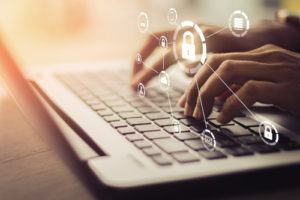It’s no secret that higher education institutions are at risk for severe cyberattacks and data theft. Last year, the New York Times highlighted the “shaky state of student privacy” in the wake of a devastating cyberattack that left the personally identifiable information (PII) of millions of students compromised. While the cyberattack in question targeted primary and secondary school students, those at higher education institutions are vulnerable as well. Colleges and universities tend to be slow to recover from cyberattacks, even as ransomware attacks against them continue to surge.
To protect the PII of students, higher education institutions should consider implementing self-sovereign identity (SSI) technology. In addition to returning control of PII back to the student, SSI technology can also help higher education institutions validate student identities far more quickly and securely. Let’s dive deeper into the nuts and bolts of SSI technology and its benefits.
Leveraging distributed ledger
Physical IDs like birth certificates, drivers’ licenses, and vaccine cards contain details like a person’s name, birthday, and address. With a physical ID, the sharing of personal details is all or nothing. Decentralized identity solutions, on the other hand, are a form of digital identification that lets users—in this case, college students—control what information is shared and with whom.
Traditionally, when information is stored digitally, it can also be accessed from anywhere. With SSI technology, data remains fully in the student’s control and permissions can be changed or revoked at any time. In turn, students can share just the data required for the transaction at-hand, whether that be a financial aid application, a tuition payment, or class enrollments. This is possible thanks to distributed ledger technology. The information is validated via a public ledger and shared through unique, tamper-proof communication channels. Once again, the university only has access to the information it needs, when it needs it.
The status quo, though, is for student data to be stored in a centralized location—and often in numerous databases across departments as well. That means hackers have multiple ways in and will be able to access a treasure trove of data if their breach is successful. No wonder more than 60 percent of higher education organizations were hit by ransomware attacks last year.
Validating student identities
Students obviously want their personal information to be protected, but SSIs are beneficial to university operations too. It’s paramount that higher education institutions can verify their students’ identities, but this is generally done by making students create usernames and passwords for various portals. They must enter their personal information into each one and the university must verify that information manually. This approach is both inefficient and insecure.
By leveraging the distributed ledger instead, universities can validate a student’s information far more quickly. There’s no need for additional paperwork or manual verification, which often ends up taking days, if not weeks. Verifying identities via a public ledger is faster and stops identity theft in its tracks. Identity theft is common in higher education in part because so many students are issued loans for school. The U.S. Department of Education issued a warning in 2021 after California’s community colleges received tens of thousands of fraudulent loan applications. The distributed ledger can help reduce those figures. Additionally, credentials can be trusted indefinitely once they are verified.
The bottom line
In 2023 and beyond, higher education institutions must be aware of their cyber vulnerabilities. Ransomware attacks, identity theft, and fraudulent financial aid applications have all surged in recent years. The difficult reality is that thousands of students’ PII is at risk of compromise. By implementing SSI technology, colleges and universities can combat data theft and put students in control of their own data.
With the help of the distributed ledger, students will no longer have to keep track of countless usernames and passwords. Additionally, they will have far more granular control over who accesses what data, when. SSIs can also help universities make themselves unattractive targets for bad actors while reducing the cost of maintaining and securing large amounts of data.
Add it up, and universities will be able to spend less time, effort, and money gathering student data while offloading data management to a distributed ledger. Meanwhile, students have full control over their personal information. With decentralized identity solutions like SSIs, everyone wins—except the hackers.
